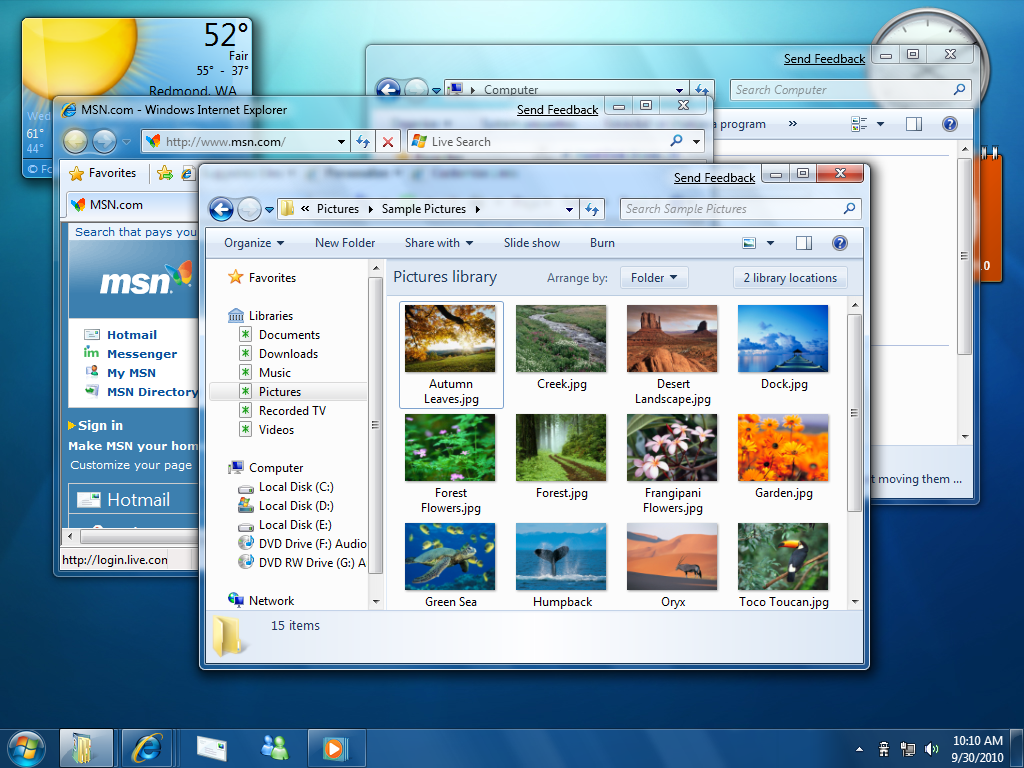Windows 7: A Comprehensive Review of Microsoft’s OS
In the ever-evolving landscape of operating systems, Microsoft’s Windows 7 holds a special place. Released in 2009 as successor to Windows Vista Windows 7 brought about significant change and improvement that shaped computing experience for million of user worldwide. In this comprehensive review, we’ll delve into the key features, user experience, security enhancements, and the lasting legacy of Windows 7.
Windows 11: The Next Generation of Microsoft’s OS
Windows 10: A Comprehensive Review of Microsoft’s Latest OS
1. Introduction: Evolution of Windows 7
Windows 7 marked a pivotal moment in Microsoft’s operating system history. After mixed reception of Windows Vista, Windows 7 was designed to address its predecessor’s shortcomings and provide a more polished, user-friendly experience. It aimed to strike a balance between aesthetics and functionality while catering to both home and professional users.
2. User Interface and Design: Aesthetic Refinement
One of the notable improvements in Windows 7 was its revamped user interface. The Aero Glass theme brought a sleek, translucent design, making the OS visually appealing. The taskbar underwent a significant transformation, introducing the concept of pinned icons and the jump list, enabling quicker access to recent files and tasks. The Start menu also saw enhancements, with a cleaner layout and improved search functionality.

3. Performance and Speed: Streamlined Efficiency
Windows 7 was lauded for its improved performance compared to its predecessor. The OS made better use of system resource resulting in faster boot times and overall responsiveness. The Resource Monitor provided users with insights into their system’s resource utilization, empowering them to optimize performance.
4. Compatibility and Software Library: Bridge to the Future
A key factor that contributed to Window 7’s popularity was its commitment to backward compatibility. Unlike Windows Vista, which faced compatibility issues with some older software, Windows 7 ensured a smoother transition for users. Its wide range of device drivers and extensive software library made it an ideal choice for both new and existing applications.
5. Networking and Connectivity: Enhanced User Experience
Enhancing the networking and connectivity experience on Windows 7 involves series of optimization that contribute to a smoother and more reliable user interaction with digital world. By keeping operating system up to date with latest security patches and performance enhancements, users can ensure a stable foundation for their network interactions. Updating network adapter drivers is equally crucial, as ensures seamless communication between hardware and software components, resulting in improved connection reliability.
6. Security and Reliability: Building Trust
Security was a priority for Window 7, and it came equipped with several features to enhance system safety. User Account Control (UAC) received refinements, striking a balance between security prompts and user annoyance. BitLocker, available in certain editions, provided full-disk encryption for improved data protection. Additionally, Windows Defender was introduced as a built-in antivirus solution, offering real-time protection against malware.
7. Multimedia and Entertainment: Bringing Media to Life
Windows Media Center a feature available in certain edition of Window 7, turned the OS into hub for multimedia content. It allowed users to watch and record TV shows, play DVDs, and manage their media libraries, all from a unified interface. The inclusion of DirectX 11 improved gaming performance and visual quality for gamers.
8. Legacy and End of Support: The Windows 7 Legacy
Windows 7’s impact was felt long after its release. It became one of the most widely used operating systems, with a loyal user base that appreciated its stability and familiar interface. However all good thing must come to end. Microsoft officially ended mainstream support for Window 7 in 2015 and stopped providing security updates in January 2020, urging users to migrate to newer systems like Windows 10.
Conclusion: Windows 7’s Enduring Influence
Window 7 left an indelible mark on the world of computing. Its refined user interface, enhanced performance, and improved security features contributed to its widespread adoption. The operating system served as a bridge between the tumultuous Windows Vista era and the more modern Windows 10 environment. While its official support has ceased, many users still remember Windows 7 fondly and appreciate its role in shaping the evolution of Microsoft’s operating systems.
In conclusion, Windows 7 was a turning point for Microsoft, redeeming the reputation tarnished by Windows Vista and setting the stage for future innovations. Its legacy lives on in the lessons learned and the features it introduced. Windows was more than just an operating system; it was a stepping stone that led to the refinement of subsequent Windows versions. Whether it’s the polished user interface, enhanced performance, or its impact on user expectations, Windows 7 will always occupy a significant place in the history of computing.